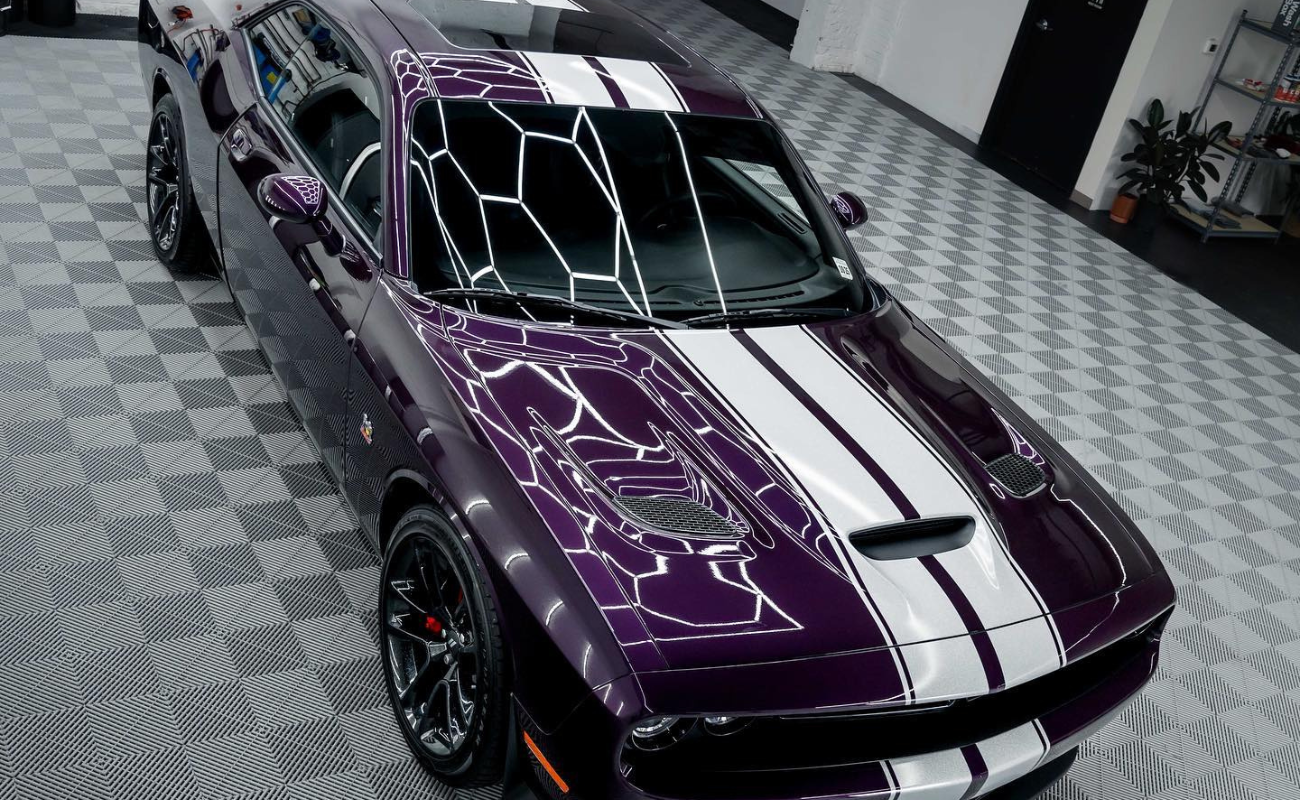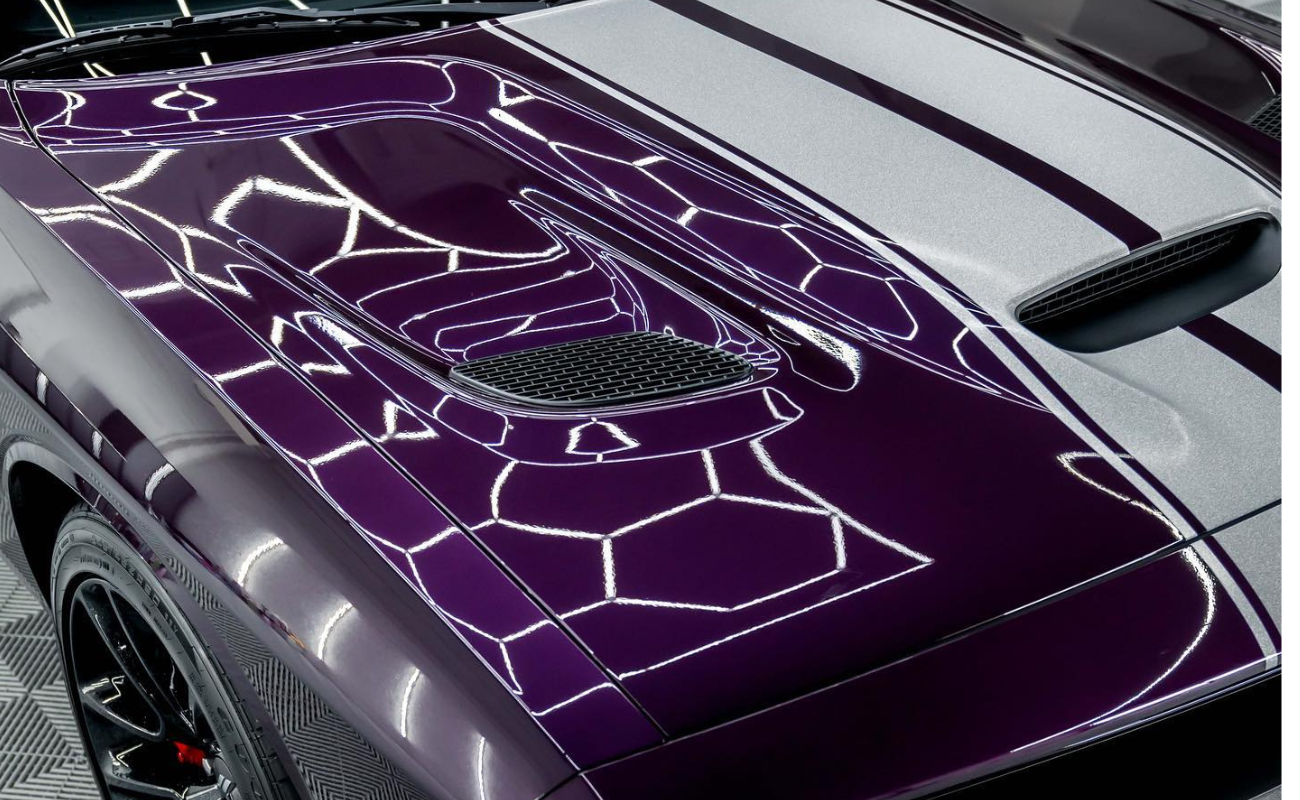
Considering applying a ceramic coating over vinyl wrap? While it may seem like a straightforward enhancement for your vehicle’s appearance, the potential consequences of this decision might surprise you. Before proceeding, it’s crucial to weigh the benefits against the risks to make an informed choice that aligns with your maintenance goals and budget. By understanding the intricacies involved, you can navigate this decision with confidence and ensure the best outcome for your vehicle’s aesthetics and longevity.
Key Takeaways
- Consult a professional detailer for compatibility guidance.
- Ensure the vinyl wrap is properly cleaned and inspected.
- Applying ceramic coating may void the vinyl wrap warranty.
- Consider the permanence and potential for accentuating imperfections.
- Commit to a maintenance routine for lasting protection and shine.
Compatibility Between Ceramic Coating and Vinyl Wrap
When considering the compatibility between ceramic coating and vehicle vinyl wrap, it’s crucial to understand how these two materials interact. Ceramic coatings are designed to bond chemically with the surface they’re applied to, providing a protective layer that enhances durability and shine. Vinyl wraps, on the other hand, are a thin film that adheres to the vehicle’s surface to change its appearance.
The interaction between ceramic coating and vinyl wrap can be complex. In some cases, applying a ceramic coating over a vinyl wrap can work well, especially if the vinyl wrap has been properly applied and has had time to cure fully. However, there are factors to consider, such as the type of ceramic coating being used and the quality of the vinyl wrap.
When the ceramic coating is applied over the car wrap, it can enhance the vinyl’s durability and provide additional protection against UV rays, chemicals, and minor abrasions. This added layer can help prolong the life of the vinyl wrap and maintain its aesthetic appeal for longer periods.
To ensure the best results, it’s recommended to consult with a professional detailer who has experience working with both ceramic coatings and vinyl wraps. They can guide the compatibility between the two materials and offer solutions tailored to your specific vehicle and needs.
Advantages of Ceramic Coating Over Vinyl Wrap
Applying ceramic coating over vinyl wrap offers numerous advantages that can significantly enhance the appearance and protection of your vehicle. Ceramic coatings provide an additional layer of protection against various environmental contaminants, such as bird droppings, bug splatter, and UV rays, which can degrade the vinyl wrap over time.
The hydrophobic properties of ceramic coatings make cleaning easier by allowing dirt and grime to be easily rinsed off, maintaining the vibrant look of the vinyl wrap.
Moreover, ceramic coatings are known for their durability. They can last for years, providing long-term protection for both the vinyl wrap and the underlying paint. This extended protection helps preserve the color and gloss of the vinyl wrap, ensuring that your vehicle looks its best for an extended period.
Additionally, ceramic coatings offer a high level of gloss and shine, enhancing the overall aesthetic appeal of the vinyl wrap. The reflective properties of the ceramic coating can make the colors of the vinyl wrap appear more vibrant and dynamic, giving your vehicle a showroom-like finish that’s sure to turn heads.
Drawbacks of Applying Ceramic Coating Over Vinyl Wrap
While ceramic coating over vinyl wrap offers notable benefits, it’s crucial to consider the potential drawbacks associated with this application.
One significant drawback is that once ceramic coating is applied over vinyl wrap, it becomes a permanent decision. Unlike traditional wax or sealants that can be removed, ceramic coating is long-lasting and difficult to undo without damaging the vinyl wrap underneath. This means that if you decide to change the look of your vehicle or remove the vinyl wrap for any reason, the ceramic coating will need to be professionally removed, adding to the complexity and cost of the process.
Another drawback to be mindful of is the potential for uneven application. Vinyl wrap surfaces can have varying textures and finishes, which can affect how the ceramic coating adheres and appears once cured. Ensuring a smooth and even application over the entire surface can be challenging, especially for those without experience in applying ceramic coatings.
Moreover, if the vinyl wrap has any imperfections or damage, such as bubbling or lifting edges, the ceramic coating may accentuate these issues rather than conceal them.
Additionally, applying a ceramic coating over vinyl wrap may void the warranty provided by the vinyl wrap manufacturer. Some vinyl wrap warranties explicitly state that applying additional coatings over their product can nullify any guarantees they offer. It’s essential to carefully review the warranty information before deciding to apply ceramic coating over vinyl wrap to avoid any potential conflicts in the future.
Essential Tips for Successful Application
For a successful application of ceramic coating over vinyl wrap, it’s crucial to prepare the surface carefully before proceeding. To ensure a flawless finish, start by thoroughly cleaning the vinyl wrap with a gentle car shampoo and water. Remove any dirt, grime, or residue using a microfiber cloth to prevent imperfections once the ceramic coating is applied.
After cleaning, it’s essential to decontaminate the surface. You can use a clay bar to remove any embedded contaminants that washing alone mightn’t eliminate. This step is crucial to achieve optimal bonding between the ceramic coating and the vinyl wrap.
Once the surface is clean and decontaminated, inspect the vinyl wrap carefully for any imperfections such as scratches, swirl marks, or fading. Addressing these issues beforehand will ensure a smoother application process and a more uniform appearance after the ceramic coating is applied.
Before applying the ceramic coating, make sure the surface is completely dry to prevent water spots. Work in a well-ventilated area with controlled temperature and humidity levels for the best results. Following these essential tips will help you achieve a successful application of ceramic coating over vinyl wrap, providing long-lasting protection and a stunning finish.
Maintenance and Care for Ceramic-Coated Vinyl Wrap
Regular upkeep and proper care are essential to maintaining the integrity and longevity of a ceramic-coated vinyl wrap. Ensuring that your ceramic-coated vinyl wrap stays in top condition requires attention to detail and a commitment to a maintenance routine. Here are some key steps to help you keep your ceramic-coated vinyl wrap looking its best:
- Regular Washing: Wash your ceramic-coated vinyl wrap regularly using a pH-neutral car shampoo and a soft microfiber wash mitt to prevent scratching. Avoid using harsh chemicals or abrasive materials that can damage the coating.
- Avoid Abrasive Materials: When drying your ceramic-coated vinyl wrap, use a clean microfiber towel or a drying aid to prevent water spots. Avoid using rough materials or air drying, as these can cause swirl marks and other imperfections.
- Routine Inspections: Periodically inspect your ceramic-coated vinyl wrap for any signs of damage, such as surface marks, chips, or fading. Addressing these issues promptly can help prevent further damage and maintain the wrap’s overall appearance.
While applying ceramic coating over vinyl wrap can enhance the appearance and durability of your vehicle, it is important to consider the potential drawbacks and compatibility issues. By following proper cleaning, inspection, and application techniques, you can achieve a stunning finish. Remember to consult a professional detailer for guidance on maintenance to ensure the longevity of your ceramic-coated vinyl wrap. The key to a flawless finish lies in meticulous care and attention to detail.



